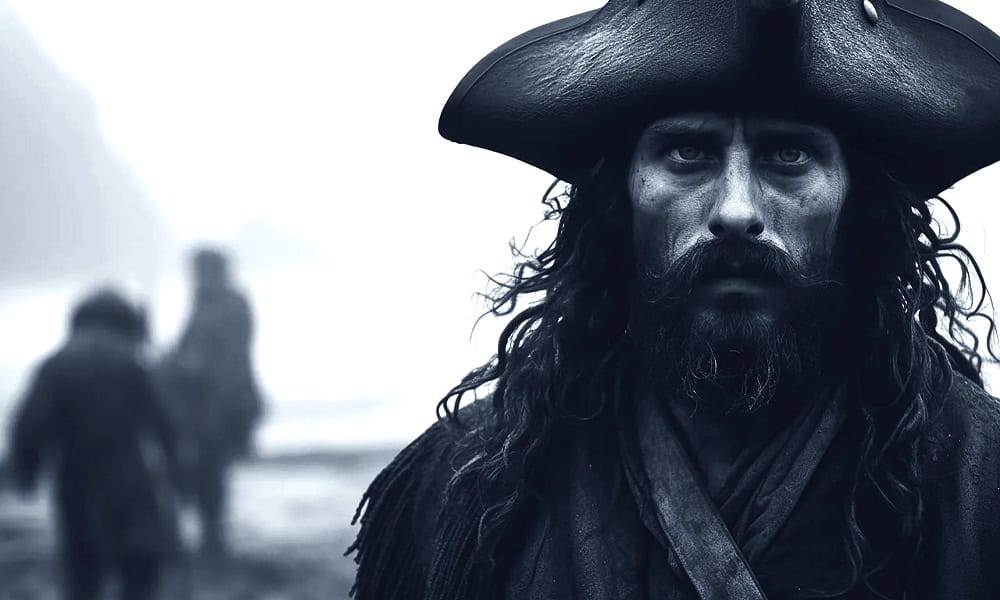If pirates working for the British crown in the Caribbean had succeeded in conquering Costa Rica, everybody here would be speaking English. Instead, we’re telling the stories of how they tried. From 1589-1590, no Spanish colony was safe. Pirates Henry Morgan and Sir Francis Drake were on the loose, as evidence by landmarks and historical documents throughout the Americas.
Drake Bay on the southern Pacific coast was named after the famous 16th century pirate, and the Isla del Coco – or Cocos Island – is said to be a hiding spot for pirate treasures, the surrounding waters a resting place for many ships.
According to Raul Arias, historian with the Center for Research and Conservation for the Patrimony, story begins with Christopher Columbus, who made four trips to the New World but touched only the southern half from Mexico and moved south. The rest of America was still “undiscovered.” At that time, the arbiter of the world was not a king, but Pope Alexander VI of the notorious Borgia family, and a Spaniard, and he decided to deed all the newly discovered land to Spain and Portugal, leading maritime powers and very Catholic.
The discovery of gold in the New World fueled a frenzy of exploration and conquest with a steady stream of Spanish vessels crisscrossing the Atlantic, with gold from Peru travelling to Portobello, Panama, in mule trains and by boat to Veracruz, Mexico, and on to Spain. Settlers, explorers and priests came sailing from the Old World to the new.
Meanwhile, other European powers were growing resentful. Holland, France and England were also seafaring nations looking for trade routes and land to exploit. In England, Queen Elizabeth I built up a navy with the aim of breaking up the Spanish monopoly. The English Navy defeated the Spanish Armada in 1588 and set off to claim America.
The queen hired Morgan, Drake and other experienced sailors as “corsairs” to attack Spanish ships and headlands in the new world. And, acting as agents for the English crown, they brought terror to Spanish vessels and colonies. Because of England’s anti-Catholic beliefs at the time, richly furnished churches were favored targets for pirates. Forts still standing in Cuba and South America are today’s tourist attractions, but in the 16th century they were protection against British terrorists.
That said, pirate companies did operate under gentlemen’s codes. According to Arias, captains faced mutinies and lost their crews if the men were mistreated or stiffed. Injuries were common and pirate ships included “surgeons” who were not medical doctors but were trained in amputations, which explains peg legs and hooks for arms. However, the movies about pirates do not do justice to the reality, says Arias.
Costa Rica faced several invasions by pirates, and Cocos Island was their sanctuary for several years. With fresh water, abundant timber and plants and animals, they could live comfortably while raiding coastal cities. Stories of pirate treasure on the island and sunken ships offshore continue to intrigue.
The Caribbean side of Costa Rica also saw several pirate incursions in the 1600s. In the 1640s, a pirate army of 600 men led by Bartholomew Mansfield headed for Cartago, then capital of Costa Rica. But the Ticos organized an army, and when the invaders reached the community of Ujarás, they were outnumbered. Retreat was the only option. Costa Ricans credited the Virgin of Pilar – the church’s patron – with a miracle, but according to Arias, it was Oliver Cromwell’s revolution against the monarchy and the industrial revolution in England that saved them. By then, England had its own colonies in North America and no longer needed pirates to boost the economy.
Later, a Caribbean insurgence from plundering buccaneers went down under men like Black Beard, and these pirates pillaged until they met defeat by arms and economics. Pirates no longer inhabit these waters, but their stories, their sunken ships and their treasure live on.
Many thanks to historian Raul Arias of the Oficina de Patrimonio for his insight on pirates in Costa Rica.






